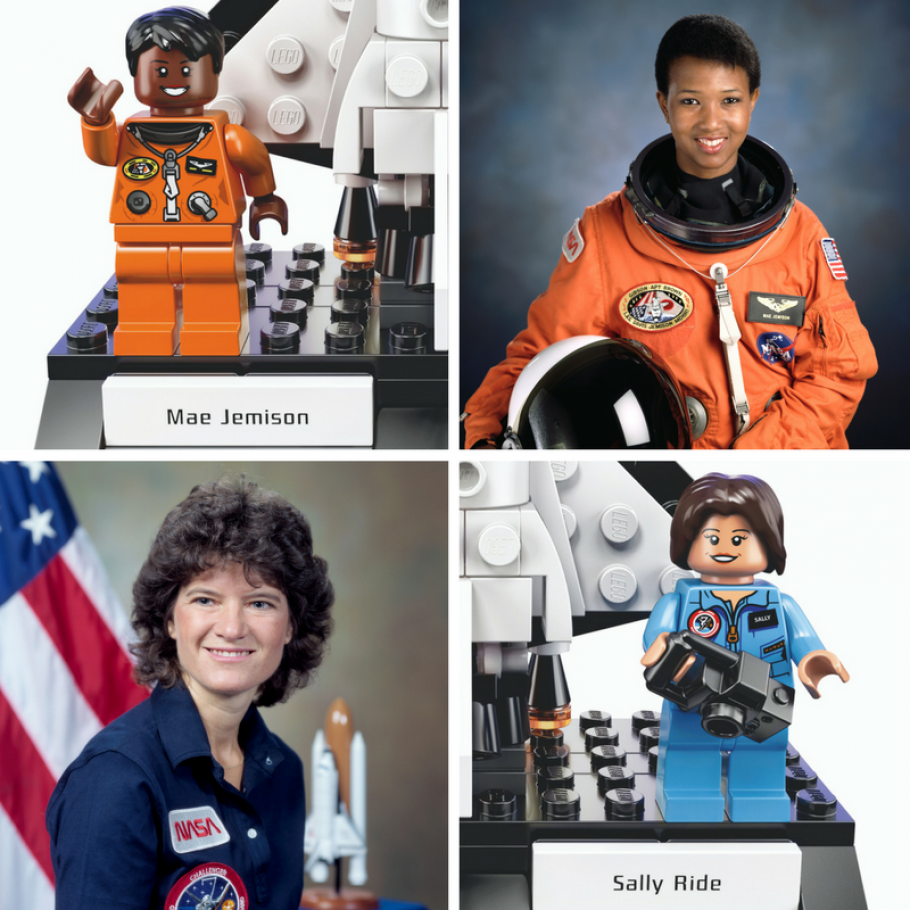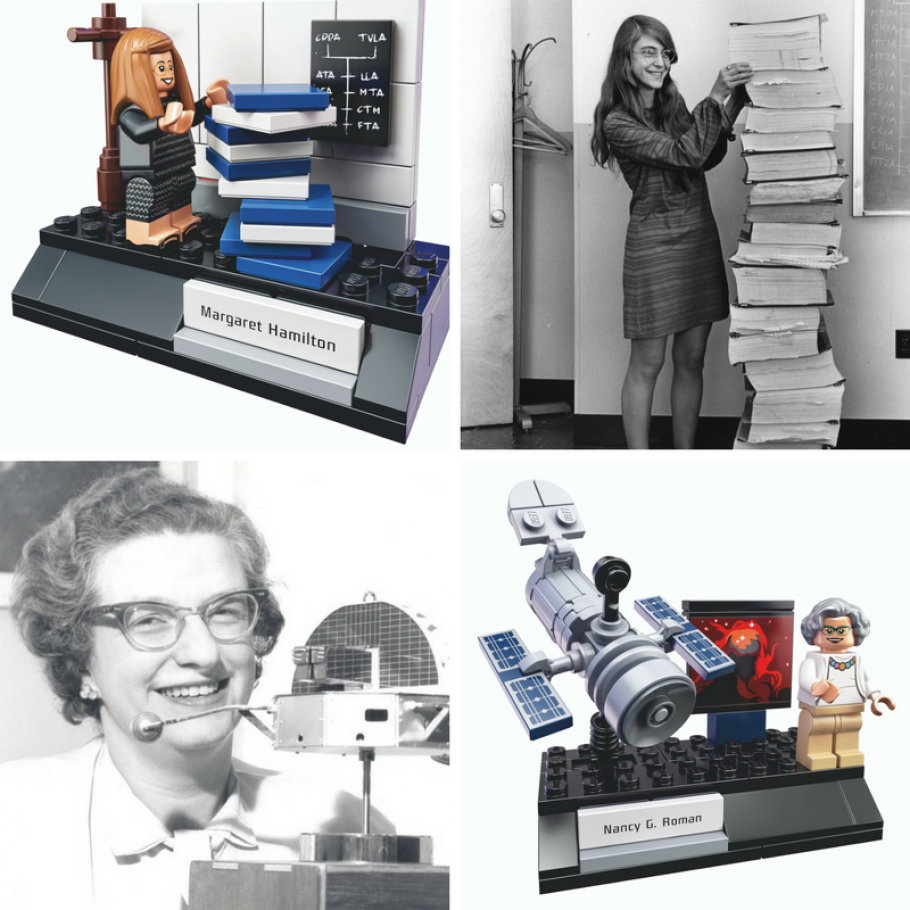
Real Stories of LEGO's "Women of NASA"
Nov 01, 2017
When Mae Jemison was young, she dreamed of traveling to space. It was a dream that fueled her life-long pursuit of science and technology—and it eventually became a reality, when she went to orbit aboard the Space Shuttle Endeavour in 1992.
Now, a new generation of aspiring astronauts and researchers can find inspiration in the LEGO® “Women of NASA” set. These scientific pioneers are part of our collection here at the Smithsonian’s National Air and Space Museum, too. Here are the real-life stories (and objects!), of the inspiring “Women of NASA.”
Sally Ride: Astronaut Sally Ride once said: “Young girls need to see role models in whatever careers they may choose, just so they can picture themselves doing those jobs someday. You can’t be what you can’t see.” On June 18, 1983, Ride became the first American woman in space, letting kids around the world see the new exciting possibilities of a career in science, technology, engineering, and math (STEM).
Ride joined NASA in 1978, after seeing an ad in the Stanford student newspaper urging women to apply to the space program. Five years later, Ride was a crew member on the Space Shuttle Challenger, where she operated the robot arm to deploy and retrieve satellites (she was part of the team that helped develop this technology, too!). After leaving NASA, Ride dedicated the rest of her life to advocating for STEM education.
The Museum has hundreds of objects that belonged to Sally Ride—from her mission patches to her tennis racket—in our collection. Many are on display in our Washington, DC, building!
Mae Jemison: Dr. Mae Jemison has earned many titles during her vibrant scientific career: engineer, doctor, Peace Corps officer, teacher, and astronaut. Jemison became the first African American woman to travel in space as a crewmember of the Endeavour in 1992.
Inspired to go to space by Lieutenant Uhura from Star Trek, Jemison joined NASA in 1987. During her time working on Endeavour, Jemison conducted a variety of experiments testing bone cells, weightlessness, and motion sickness. She continued her career in science after leaving NASA, and has been a champion for women and minorities in STEM. Plus, she even got to guest star on an episode of Star Trek in 1993!
Dr. Mae Jemison’s name tag, which was attached to her Space Shuttle flight suit, is part of the Museum collection.
Scientists Nancy Grace Roman and Margaret Hamilton are among the groundbreakers featured in the new “Women of NASA” LEGO® set. Photos courtesy of LEGO® and NASA.
Nancy Grace Roman: Nicknamed the “Mother of Hubble,” Roman was NASA’s Chief of Astronomy in the Office of Space Science and was the agency’s first female executive. As a young girl, she had an affinity for science, even forming an astronomy club at her elementary school. Roman would go on to earn her PhD in astronomy from the University of Chicago in 1949.
She joined NASA a few months after its founding, and established the agency’s astronomy program in 1959. Roman planned and managed numerous astronomy-based projects like the Hubble Space Telescope.
In the Museum collection, you can learn more about Nancy Grace Roman’s work at NASA with the Space Astronomy Oral History Project, which examined the use of rockets and satellites from the 1940s-60s. Roman was interviewed as part of the project.
Margaret Hamilton: On July 20, 1969, the Apollo 11 astronauts landed on the Moon, and computer scientist Margaret Hamilton helped put them there. Hamilton led the Software Engineering Division of the MIT Instrumentation Laboratory, the team responsible for developing the guidance and navigation system for the Apollo spacecraft.
In addition to writing the code that brought astronauts into space and safely back home again, Hamilton’s work formed the bedrock of software engineering as a whole. In fact, Hamilton herself coined the term “software engineering!”
The Apollo flight software Margaret Hamilton and her team developed is documented as part of the Museum’s Apollo Flight Guidance Computer Software Collection. This collection includes reports, plans, analysis, and other documents about Hamilton’s process.
Related Topics
You may also like
Related Objects
We rely on the generous support of donors, sponsors, members, and other benefactors to share the history and impact of aviation and spaceflight, educate the public, and inspire future generations. With your help, we can continue to preserve and safeguard the world’s most comprehensive collection of artifacts representing the great achievements of flight and space exploration.



